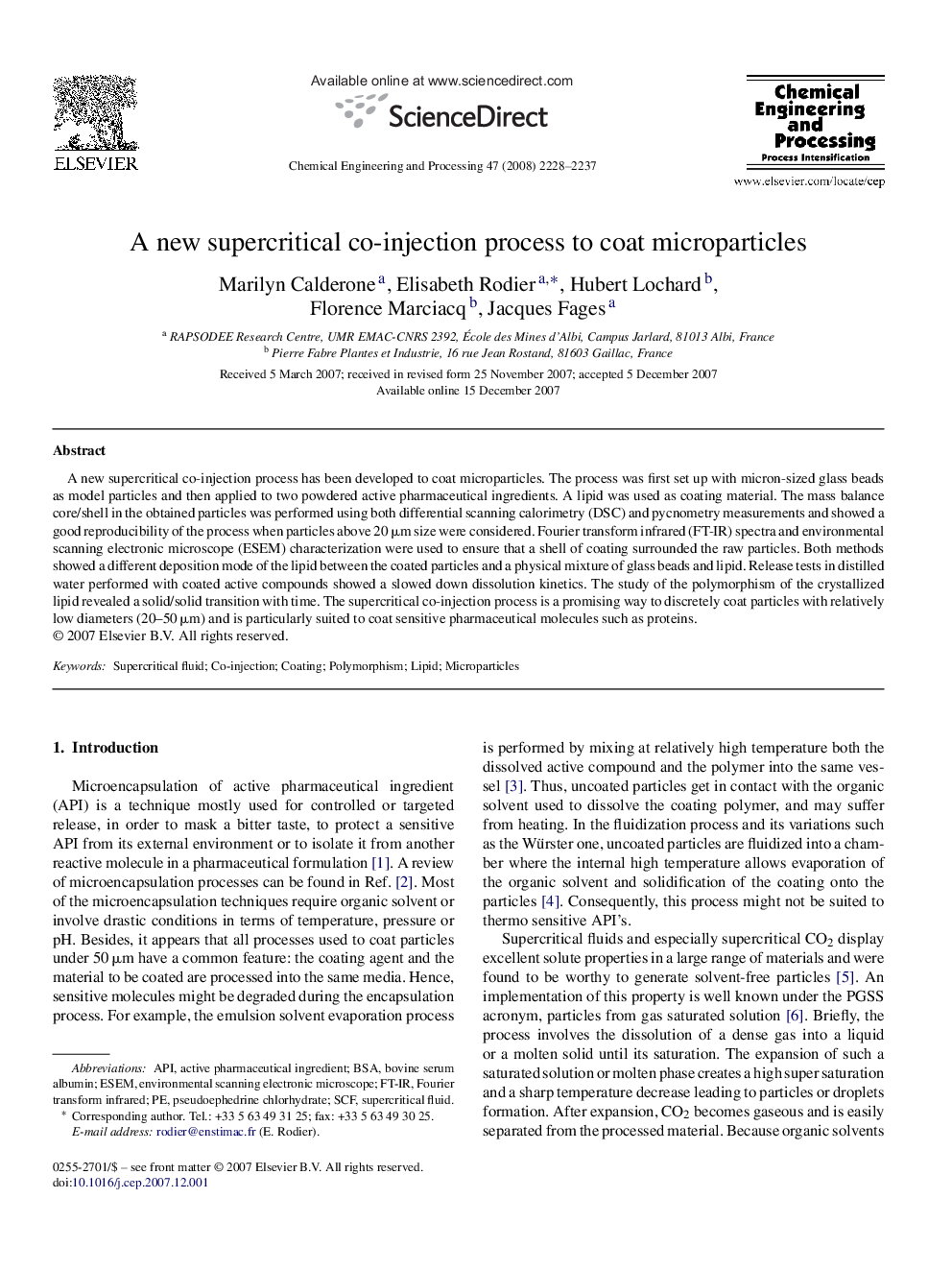| Article ID | Journal | Published Year | Pages | File Type |
|---|---|---|---|---|
| 687577 | Chemical Engineering and Processing: Process Intensification | 2008 | 10 Pages |
A new supercritical co-injection process has been developed to coat microparticles. The process was first set up with micron-sized glass beads as model particles and then applied to two powdered active pharmaceutical ingredients. A lipid was used as coating material. The mass balance core/shell in the obtained particles was performed using both differential scanning calorimetry (DSC) and pycnometry measurements and showed a good reproducibility of the process when particles above 20 μm size were considered. Fourier transform infrared (FT-IR) spectra and environmental scanning electronic microscope (ESEM) characterization were used to ensure that a shell of coating surrounded the raw particles. Both methods showed a different deposition mode of the lipid between the coated particles and a physical mixture of glass beads and lipid. Release tests in distilled water performed with coated active compounds showed a slowed down dissolution kinetics. The study of the polymorphism of the crystallized lipid revealed a solid/solid transition with time. The supercritical co-injection process is a promising way to discretely coat particles with relatively low diameters (20–50 μm) and is particularly suited to coat sensitive pharmaceutical molecules such as proteins.
